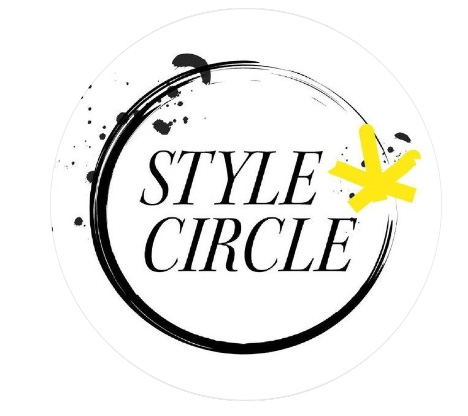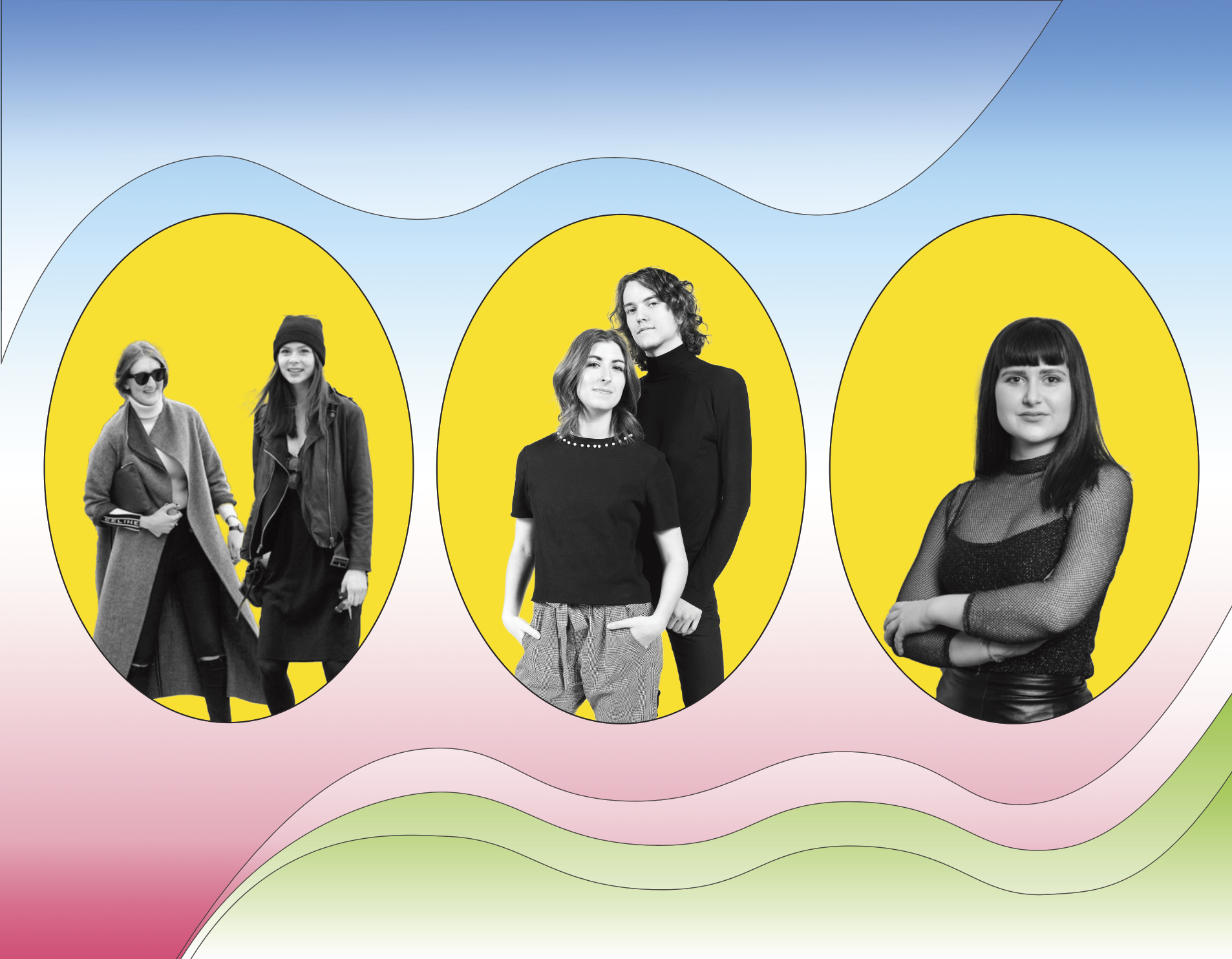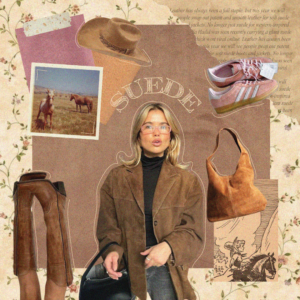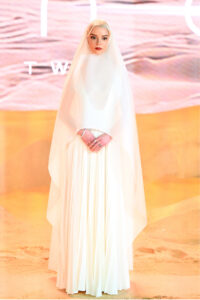Since its origins within the Fashion Union, StyleCircle has fostered the talents of many Ryerson students seeking to emerge as professionals within the industry. Over the years, the publication has evolved under the vision of several editors that enhanced the publication’s status as an industry-adjacent magazine run by students. Through collaboration, they seek to continually push the boundaries of people’s preconceived notions of fashion and promote radical change within the industry. Their vision ultimately carries through their post-grad careers and ambitions. Understanding StyleCircle’s history and acknowledging the contributions of fellow predecessors allows the next generation to continue the legacy of what the publication stands for, in hopes of analyzing the past to shape the future. In conversation with the current editor-in-chief, we had the privilege to speak with the previous editors-in-chief of StyleCircle, they reflected on their time with the publication and their current endeavors.
BRONWYN & MILLIE
How did StyleCircle come to be?
Bronwyn: FCAD had just been going with RCDS (Ryerson Communication and Design Society), which started the year before we went to first year. So we came at an interesting time because we were given the resources and opportunity to speak with so many different people about the potential that Ryerson has for its students. We just really felt that there wasn’t strictly a fashion publication run by students at Ryerson that showcased fashion work. We really wanted to show a magazine that is shown once a year that shows a more critical perspective on the industry and almost like a larger portfolio for the program as a whole to show what fashion students can do. Our intention was not to just be a glossy fashion magazine; we wanted to have more thought-provoking articles and collaboration. Millie, myself, and Luke sat down for summers on end creating style guides, pitches, and had to sell it to RCDS because they were like ‘Why should we fund another magazine? There’s already one that does touch on fashion.’ Through that, we just ran with it and it’s exciting to see it continue to grow!
Millie: I remember that Bronwyn and I had to pitch for funding and wanted to get passes for fashion week. We were so nervous to ask for $300 to pay for passes. We prepared, made flashcards, and had this whole thing to present, and I remember RCDS mentioned that “we’ve never seen anyone come in so prepared for one of these meetings.” We were so invested in the project and wanted it to work.
Previously, StyleCircle was affiliated by the Fashion Union, what made you and your team decide to separate yourselves and become an independent publication?
Millie: We wanted to include students from all over campus, and that was a big focus. We were able to have so many amazing contributors from all across different faculties of the school. It’s a different perspective. As fashion students, we’re so entrenched in what we’re doing, and it’s worthwhile to bring in voices from other parts of the school. I felt like there’s so many students that are into fashion that maybe didn’t want to pursue a career in it, and I think it validated that fashion is a legitimate interest beyond materialism. People can find an outlet and feel like they have value and are contributing to something bigger.
You were the first to create The Book which set the foundation for the publication as more than just a digital presence. Could you tell me about the process behind how it started and the work that it takes to go from solely a digital publication to something more?
Millie: I had such a vivid memory of sitting in Balzac’s with Luke and Bronwyn. We came upon the name, “The Book” from The Devil Wears Prada from the scene where Andy delivers the final manuscript, before they go to print, to Miranda Priestly. StyleCircle had a different tone at that point in time, so we wanted something that felt monumental. From that idea, we were influenced by RAD Magazine, and they were someone we looked up to and spent a lot of time with the editor-in-chief of RAD at the time. Bronwyn handled the more technical aspect of operations, but I helped more with pitching and created presentations. There was so much we were learning, and we really went through it all. The feeling of seeing the first print of the issue was amazing. Overall, people really wanted us to succeed and thought our message was important, and they wanted to help us along. It’s always working until the very last minute.
Where are you currently working right now, and how has your time at StyleCircle influenced the work that you’re doing today?
Bronwyn: I work as the fashion assistant for Bell Media, where I support two of the studio’s fashion stylists. I love my job, it’s a great company. I work on two of the studio’s television shows and also assist during award season. For award season I assist the stylists with dressing our hosts for the red carpets. We try to pull from as many Canadian designers as possible during the fittings that go into creating the final red carpet look. For the Golden Globes this year, one of our hosts, Lainey Lui, wore a beautiful design by Canadian designer Lesley Hampton. This look got picked up by all sorts of media outlets for best dressed. It was so exciting to see this young Toronto Indigenous designer highlighted internationally in the media. Being a part of the Ryerson Fashion program and StyleCircle gave me so many opportunities for my future career. It continued to push my strong work ethic, gave me lots of exposure to the Canadian fashion industry and I formed life long friendships.
Millie: I’m a designer for Dynamite. I started as an intern when I graduated from Ryerson, and I stayed on. If you can take away one thing, it’s that you have to juggle so many responsibilities. I sometimes joke that my life is so stressful as a fourth-year student that going to work is a relief. It’s a different kind of feeling. It really enabled me to be a more efficient and well-rounded employee. Anyone who takes part in the student groups who juggles the responsibilities while being in school helps you become a better employee in life, knowing how to multitask and collaborate.
Any advice for the future team coming up for this year?
Bronwyn: Take risks, try new things, and don’t be afraid to fail because everyone does. We failed our first time, but we were able to make it work. When The Book was printed for the first time, one of the people at the printers accidentally hit a key while printing and had a big typo in the first page. We freaked out because we thought we made that mistake. They ended up reprinting the issue and apologized because it wasn’t our fault. So things happen.
LUKE & NAOMI
When was your first introduction to StyleCircle? How have you seen it grow from the first time you entered to seeing your final works together?
Luke: I didn’t join any clubs in high school, so when I got to Ryerson, I had a lot of overcompensating to do. I found out about the Fashion Union on my first day and met Millie and Bronwyn at the booth in the quad. So I joined the union, and that’s how I got introduced to StyleCircle. I spent a year there and I was doing fashion show coverage and writing articles for the blog now and then. By the end of the year, the president of RCDS talked to Millie and Bronwyn about thinking big and projects they can take on. So I stayed with the Fashion Union as well as going along with Millie and Bronwyn for the publication where we started working on The Book.
Naomi: Being from the Creative Industries program, it was a double-edged sword because we had access to all of these different student groups, but we didn’t fit within any one type of program where we could singularly identify with. Because I minored in Fashion, I was trying to find ways on campus to be involved in fashion-based groups that didn’t solely rely on my program. I think I joined in first or second year just as a junior writer and social media coordinator. We didn’t have super defined roles in the beginning; everyone worked together and did what they loved. By the time fourth year came around, Luke and I started reaching out to them because we knew exactly what their original vision was and what the group was meant to do. I did digital, marketing, social media, all of the community-facing aspects, whereas Luke was the more creative/artistic direction, and looked over the production of The Book. Our overarching goal was to make the group as industry-adjacent as possible so that we can create opportunities for students actually to work at fashion week, volunteer with different industry professionals, and get published on bigger platforms to see how the real world industry worked.
What have you learned during your time when Bronwyn and Millie were co-Editors-in-Chief, and how has your prior experience shaped the way you lead your own team?
Luke: I was a fashion design student, so I’ve never been exposed to graphic design before first-year fundamentals, and through that class, I realized that I really liked it. At the time, Bronwyn was in her second year as a Fashion Communication student, so she had experience in graphic design and typography. I learned a lot in that sense about typography and layouts that I wasn’t getting [from] anywhere else. It was also paired with that creative freedom where I could just get to experiment and have fun. I looked up to them because I was able to work with them so closely. When I first met them at the union, I thought, “these girls are so cool and I could never be friends with them.” But we formed a really good creative relationship, so it was fun and rewarding.
There were innovative and ambitious ideas during your tenure and opening a lot more creative opportunities such as the website redesign, venturing out to start the podcast, StruggleCircle all within the span of a year. What was the process like starting from idea to execution?
Naomi: As we start to write about more hard-hitting, critical issues within fashion, it just started to become apparent that what we wanted to say couldn’t just happen on the website, on our social media, or in The Book. What’s really exciting about creating the podcast was the people in the team that were the most passionate about those topics were able to spend 45 minutes to an hour dissecting and going deep into these issues and articulating their perspective on these different topics. At the time, we weren’t sure how the podcast was going to work and how people were going to respond. We want to pick punchy, eye-catching topics such as burnout in fashion that are big enough that people who weren’t part of StyleCircle would want to listen to.
I am so thankful that these topics are still so relevant today, but I’m also really annoyed that we still have to talk about all of this. Because we’re in 2020, we shouldn’t still have to demand that companies represent 15% of the product on their shelves be represented by Black-owned businesses. We can’t even start to unpack fashion media with the idealized beauty standard of the white, thin, able-bodied, etc. The world does not look the way fashion media looks, or the runways look. Our classrooms don’t look the same fashion magazines do, so why is the industry pretending that the rest of the world isn’t out there? We’ve come a long way, but we have so much farther to go. I hope people can go back to these episodes and see where we were and compare where we are now.
The third issue for The Book, titled “Human Futures”, explores the “vision for a future that is less about the cold inhumanity of mechanics and artificiality and more about the innovation and rebirth of human rights and representation.” Could you tell me about the creative process behind The Book and the concept?
Luke: We tinkered the idea of a theme through the second issue, “Under the Radar.” It was kind of redundant since that was what StyleCircle is anyway in terms of showcasing talent. For Human Futures, the problem we had that year was to inspire people to get really good articles such as written or research pieces since they take time and effort. I wanted to inspire people by reminding them that they can think big! The exec team was thinking about the logical progression from our “Under the Radar” theme, such as where do we see ourselves in the future? We’re all acutely aware of the injustices in the world and the need for empowerment. We’re all personally motivated by these things, and these are the changes we want to see as young people, so we want to push for that message while leaving room for interpretation of the creatives on our team. It’s giving lots of freedom but the context of how we take what we believe and what we learned for ourselves and each other through something tangible.
Where are you currently working right now, and how has your time at StyleCircle influenced the work that you’re doing today?
Luke: I’m a graphic designer right now for a beauty company. All I have to do is bring in the three magazines that I made with my own bare hands, like I know a thing or two about editorial design. My first love was fashion design, and I’m currently working on my own brand and personal projects, but that doesn’t pay the bills right away. Having the visceral experience as an Editor-in-Chief and the applicable skills of graphic design and editorial design is incredibly valuable. A lot of the graphic design that I do is very commercial. The nuance of graphic design is something that people often overlook. It’s so subtle, but it can add so much to the presentation of the work.
Naomi: I’ve been working with CAFA (Canadian Arts & Fashion Awards) since I graduated at Ryerson. I’m really happy that it’s an organization supporting and promoting Canadian design in such a robust way. You start to see how diverse and talented Canadians are when it comes to fashion! Samira Nasr, who was just announced to be Editor-in-Chief of Harper’s Bazaar, is Canadian. Imran Amed, who started the Business of Fashion, is also Canadian. To look at our industry and look who makes up our industry is exciting. My work with CAFA now is a complete extension of my experience this far because I came to Ryerson to work in fashion media and fashion publishing. I then decided I don’t want to write anymore for a magazine. I want to do something bigger.
Now I’m currently working at a law firm full-time, but then I do CAFA part-time. I was taking a second-year law elective in intellectual property rights in the digital realm. It really got me thinking that one of the biggest ways designers can be protected is making sure that the unique and distinct elements of their brand can be protected from theft. I was doing so much research that it just boggles my mind how the law can help design. Also, ways that it can’t, how you can work around that, and how you navigate the grey areas to protect designers and their creative production. I think that’s where my career is going to go because, in my mind, that’s a tangible way that designers can be supported. Now that social media has allowed things to be stolen so much easier and quicker, it exacerbated the conversation of fashion law as a practicing area.
Any advice for the future team coming up for this year?
Naomi: If you want to make it the most, you have to give it the most. Given what we accomplished, I don’t regret anything. Yes, we lost sleep. Yes, we were exhausted. But it was so worth it because we made it exactly what we wanted. Know that as a student, you can literally say anything. If there’s a change that you want to be made or things you want to seek, just do it because there will be others who want to see it too.
Luke: To be honest, there was a moment in one of our last executive team meetings when we were all looking at each other questioning “do we want to give this up?” We had built a lot of momentum in our year, so it felt rough just to let it go. There was a moment where we’re wondering, “why don’t we just take this beyond Ryerson?” I think there was a part of us that was excited to do that, but I felt that it’s still in its infancy and we’re still not hitting the right groove. How can the next person do it? It was the best for us and for the publication to give it to a new generation of voices who would put their own spin on it. The only thing we wanted was for it not to die and still be excited about it.
ALICIA
When was your first introduction to StyleCircle? How have you seen it grow from the first time you entered to seeing your final works together?
The first time I heard of StyleCircle was through my friend, who was better friends with Millie and Bronwyn. Her name is Zoya, and at the time, everyone knew Zoya. They were hiring for Graphic Designers [as] they didn’t really have anyone and everyone kinda knew me as like, the girl who did graphics. Even though I was a Graphic Designer, I ended up writing. I don’t wanna say it was like a voluntold, but it was an “oh, you should write an article!”, and a response of “okay, I can do that!” I was friends with Luke, so we already had that kind of relationship, and I was always interested in what they were doing, just because I was always interested in magazine production and I had a natural skill set for layout design.
The fourth issue of The Book talks about the dichotomy between fashion and art and grounding the notion that fashion can be art. Could you tell me about the creative process behind your concept and going into production?
I thought of that theme before Luke told me I had the position. I had always been interested in it because it was the reason I got into fashion in the first place as a module of self-expression and expression of my own art. I always dressed loud, and I wore heels to high school, which died down in university out of necessity. When I wasn’t in lectures sleeping, fashion allowed me to come out of my shell and portray myself to the public. Now I do that more with my photography and styling because I can art direct these abstract concepts instead of wearing them. It came out through my personal experience because that’s what I thought of fashion as, and not everyone that I knew did. Even my peers working in the fashion industry thought it’s just what you wear and what you buy. Which, it can be, but fashion is art, fashion is an expression, it’s rooted in history, and there’s a lot of theory and research behind it.
This was the first time The Book had a consistent aesthetic throughout. How did you decide to make the publication a bit more streamlined than previous issues?
I think my main goal was to take the typography to a new level, and the visual content within it to a new level. I was in more [of] a place to experiment and try new things and put content out that can be more widespread. I had a lot of professors at Ryerson saying that the typography sucks, so I just wanted to change that discussion, to [make it something] the Ryerson School of Fashion would be proud to represent. As people pitched stories, the content just kind of formed itself.
You were essentially the first solo editor-in-chief that StyleCircle had since the first issue. Can you tell me about your experience on what it was like leading a team on your own.
It was finding commitment from people [that] was my biggest challenge, and being able to depend on people. I was still a full-time student, [so] it was a lot more work than I had bargained for. Because of my background in writing, art direction, and layout design, it was rewarding to be able to help direct in both elements. Through that time, I also became very dependent on my Managing Editor, Emily. She was just an amazing asset, and I became really close with her. So I was really grateful for those kinds of collaborations; people that just come in and really take things in a new direction.
You were the first to give StyleCircle a new impression as a more Toronto-based independent, industry-level, niche magazine initiated through Luke and Naomi the previous year. What was your process within that decision with Lindsay Anne Delaney, the photographer?
It was something Lindsay offered me because she was my mentor; now we have a business partner/friend relationship. At the time, she was like “I’m proud of you, you know what, I will do this thing for you and shoot your cover.” If I’m honest, I didn’t want her to at first, because that was going to be my cover! But ultimately, I knew if she shot the cover, StyleCircle would gain more recognition. We have Narces on the cover. Juzar, the model appeared in a MAC campaign a month later. Kyla, the other model, walked for Gucci right after we shot the cover. I think it shows that students like us are serious content creators and are collaborators of the fashion industry. It was so much better executed than I could’ve done on my own. I got to run a very big set and production that day and have other people on set get experience with the production of that caliber. It was an overall, more valuable experience.
Now that you’re freelancing as a photographer and a graphic designer, how has your time at StyleCircle influenced the work that you’re doing today?
I definitely understand how to work with collaborators because I don’t think anyone before StyleCircle had the opportunity to work with a team of 35 people. In that regard, I think that was the biggest takeaway for me. With anything, you always make mistakes but I’m glad I had those learning experiences when I was still in school to do better in the future, because I still want to work in publishing. In terms of typography, I opened my mind to things I didn’t like before. I was stuck on a lot of things from Beatriz, who taught me typography, which is right and wrong. Especially when others had different experiences and were willing to break rules that I wasn’t, I think it opened my mind as a designer to take more risks. As a photographer, working with more people and more concepts, you’re always just inspired and taking new directions. You grow from every shoot you do, so working on set with so many people for two years…
Any advice for the future team coming up for this year?
No. You guys will kill it!

























